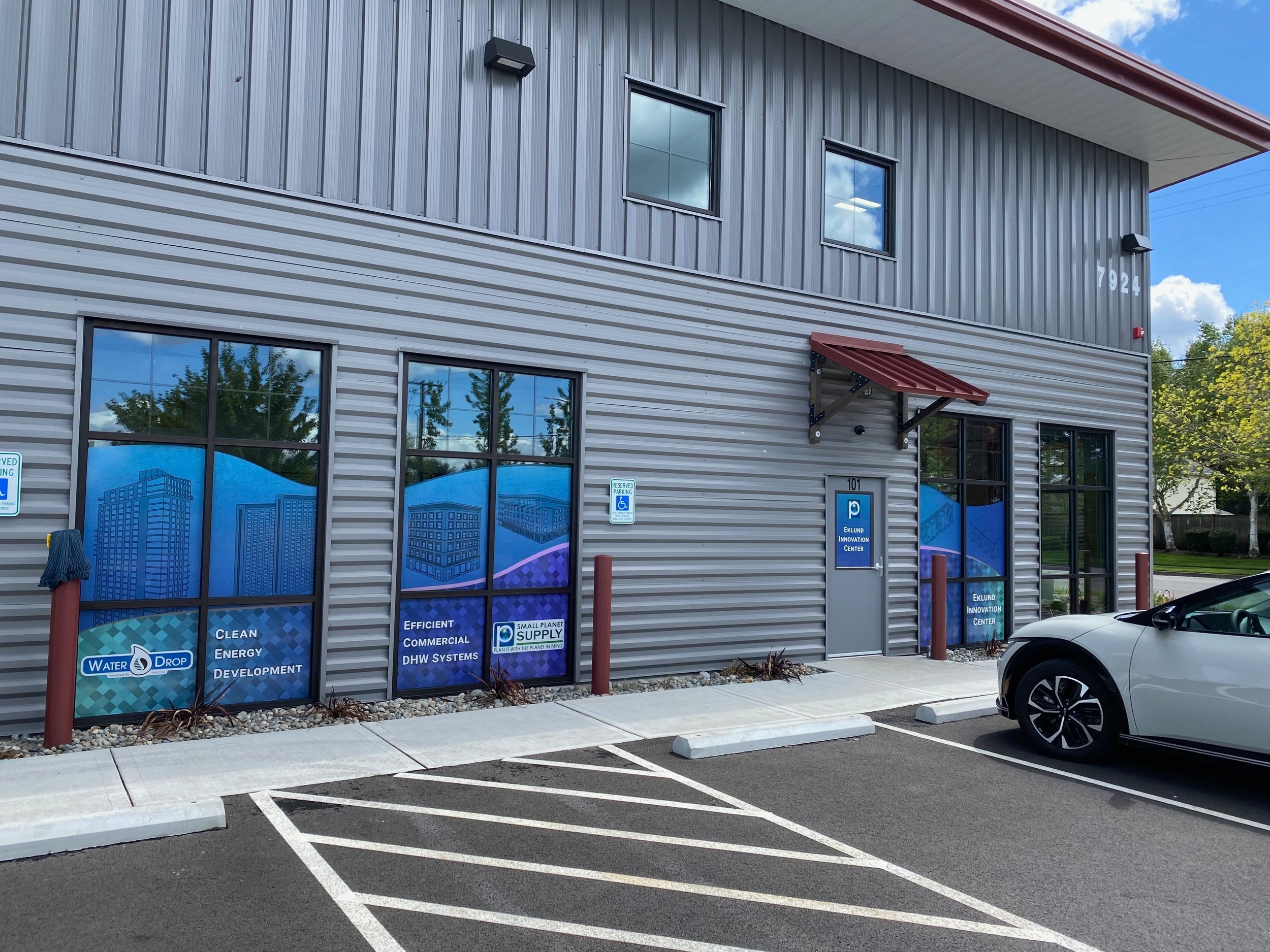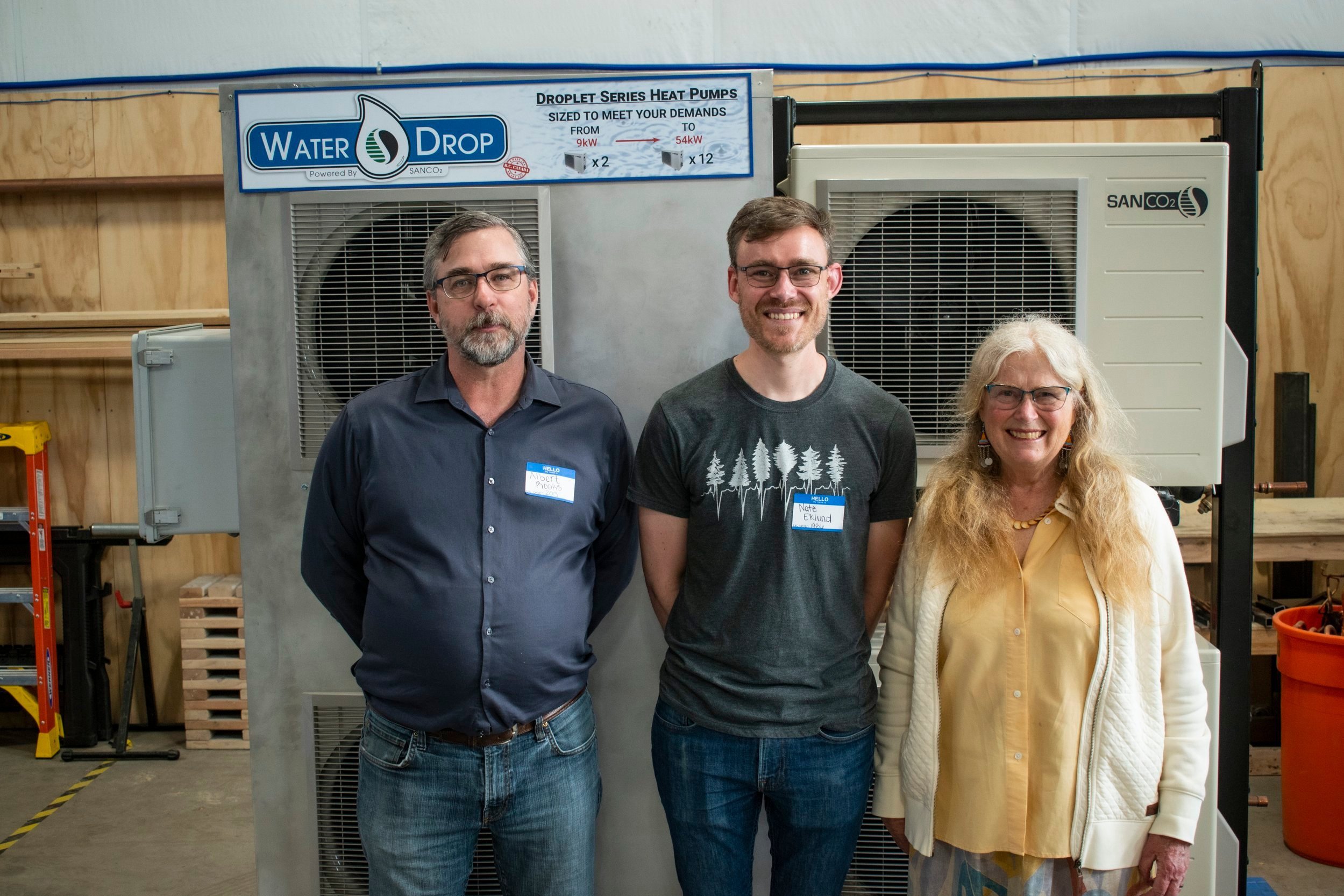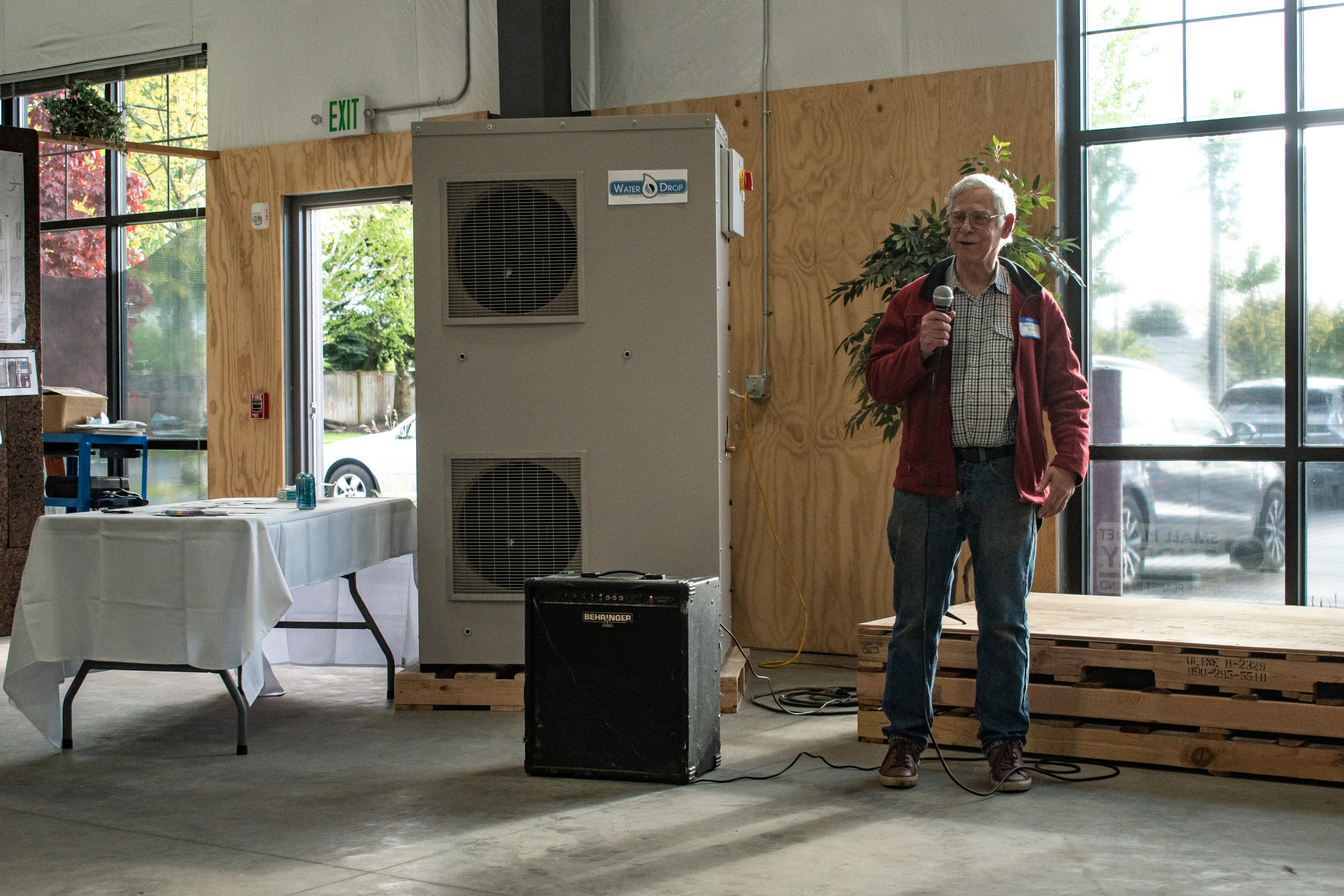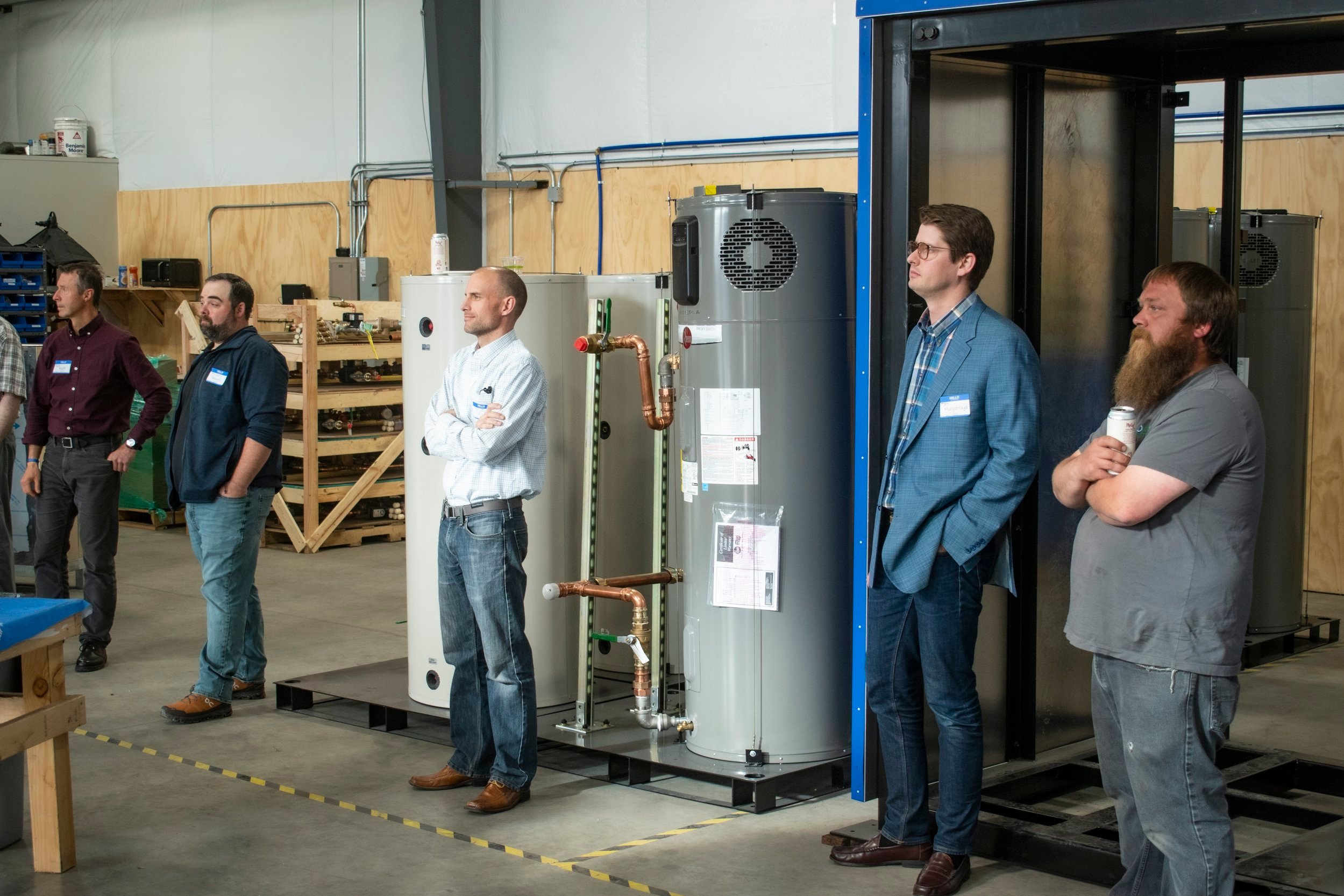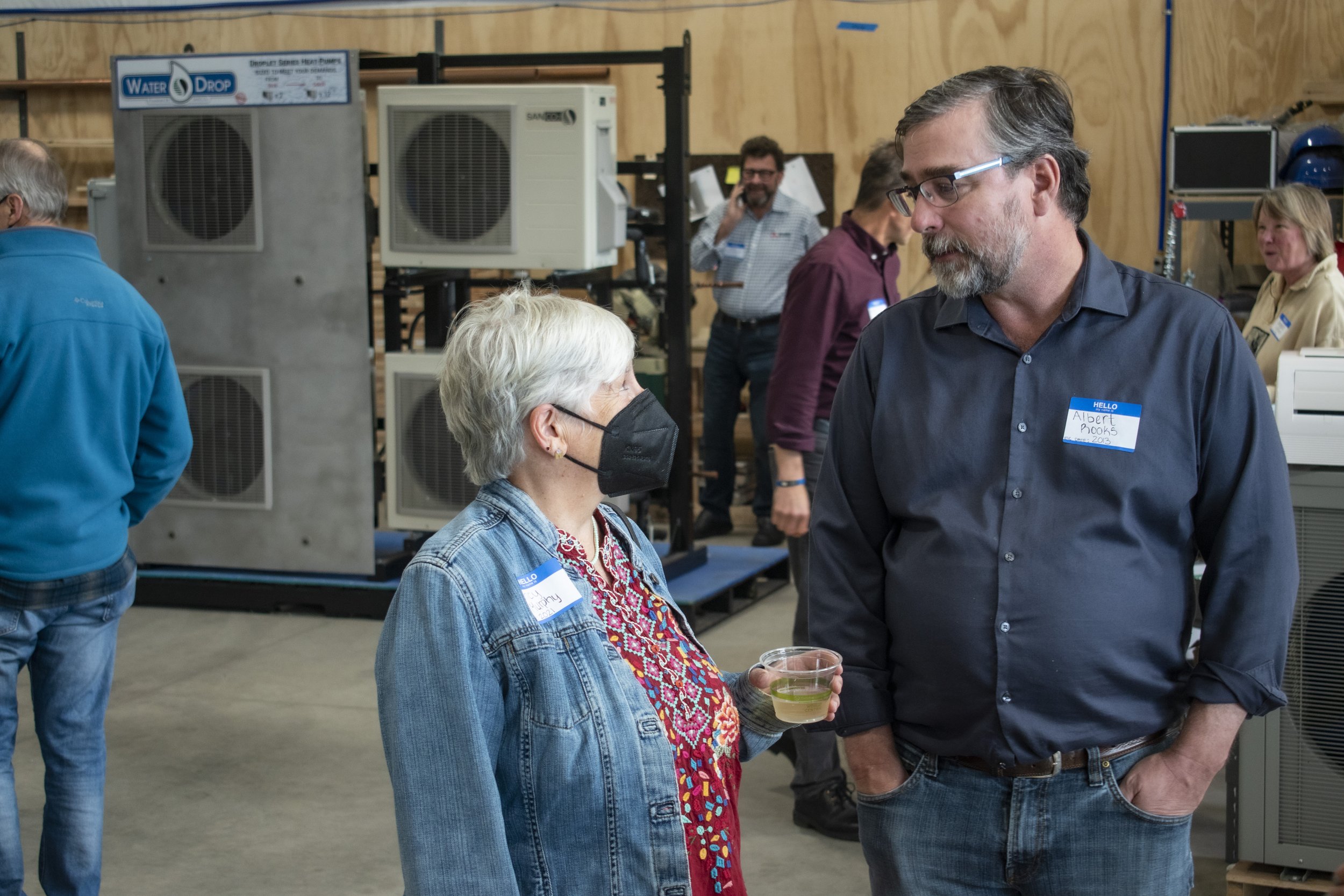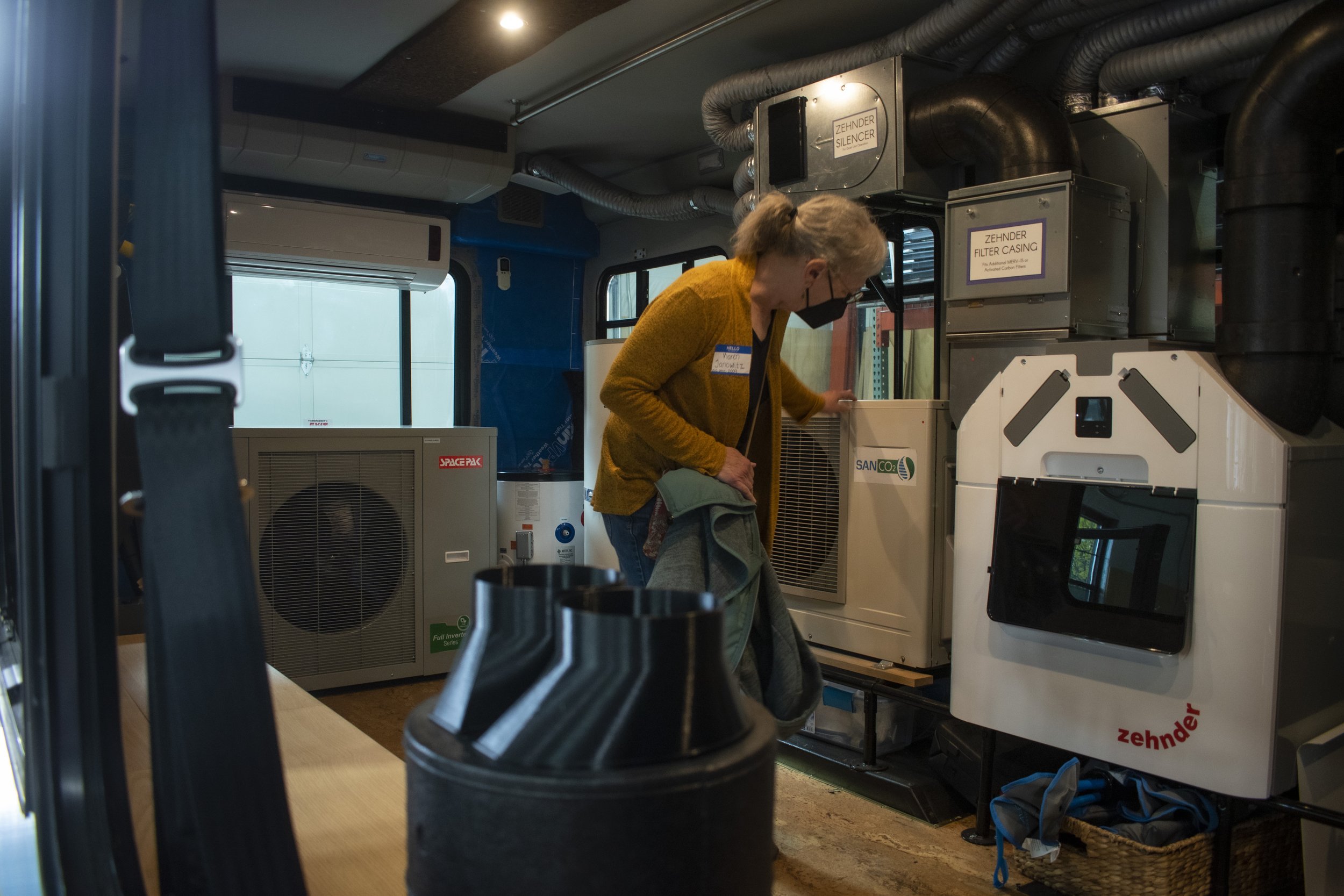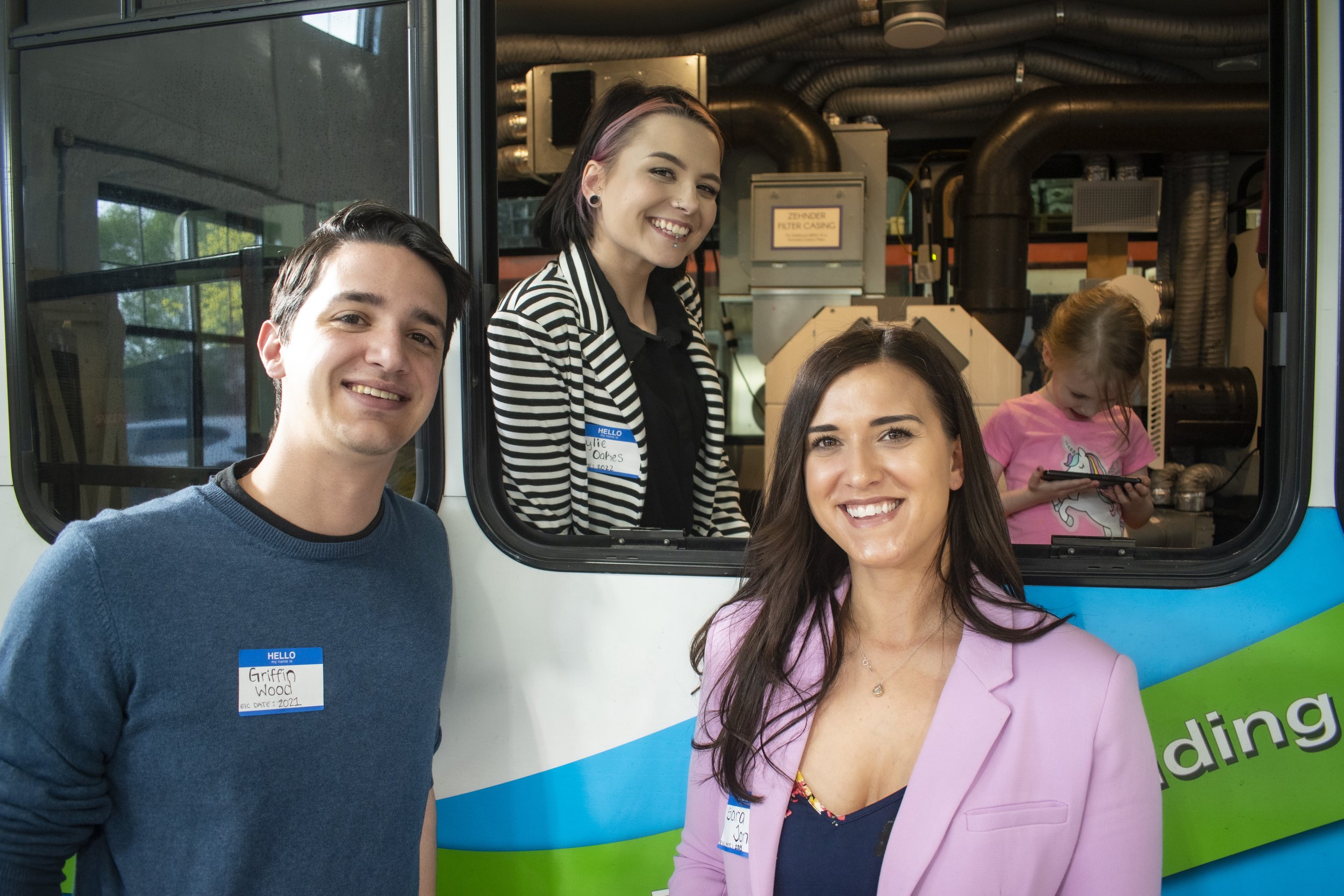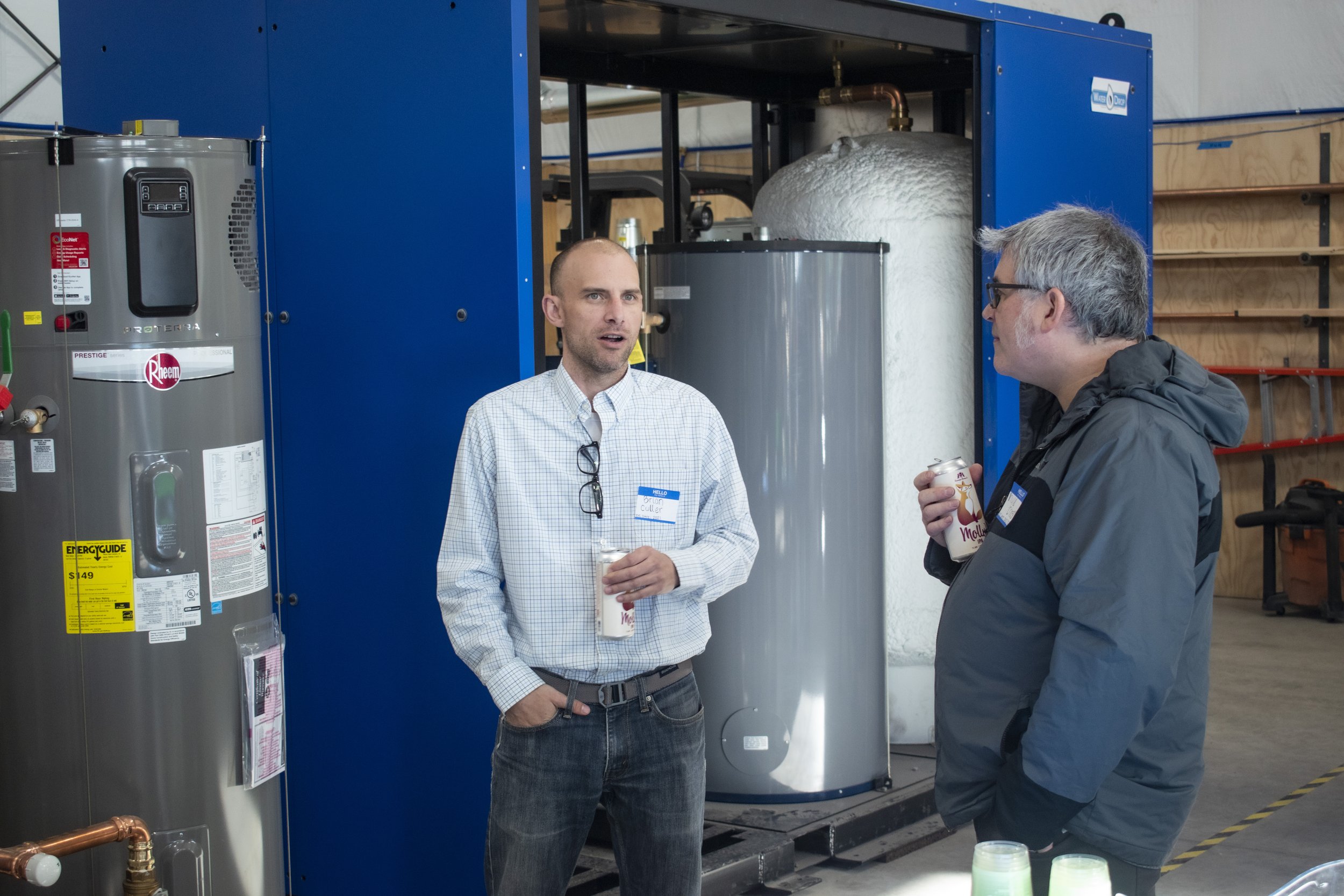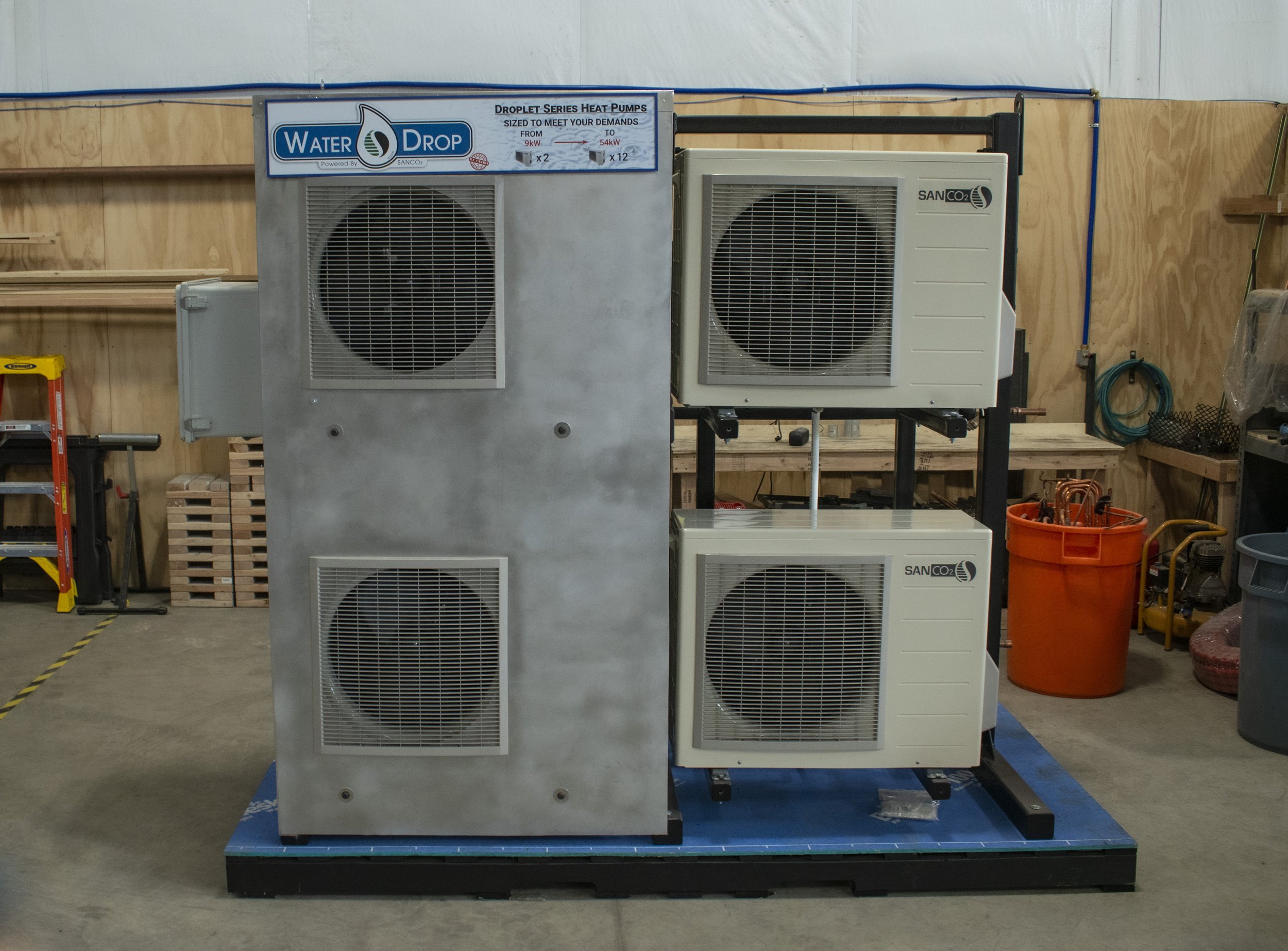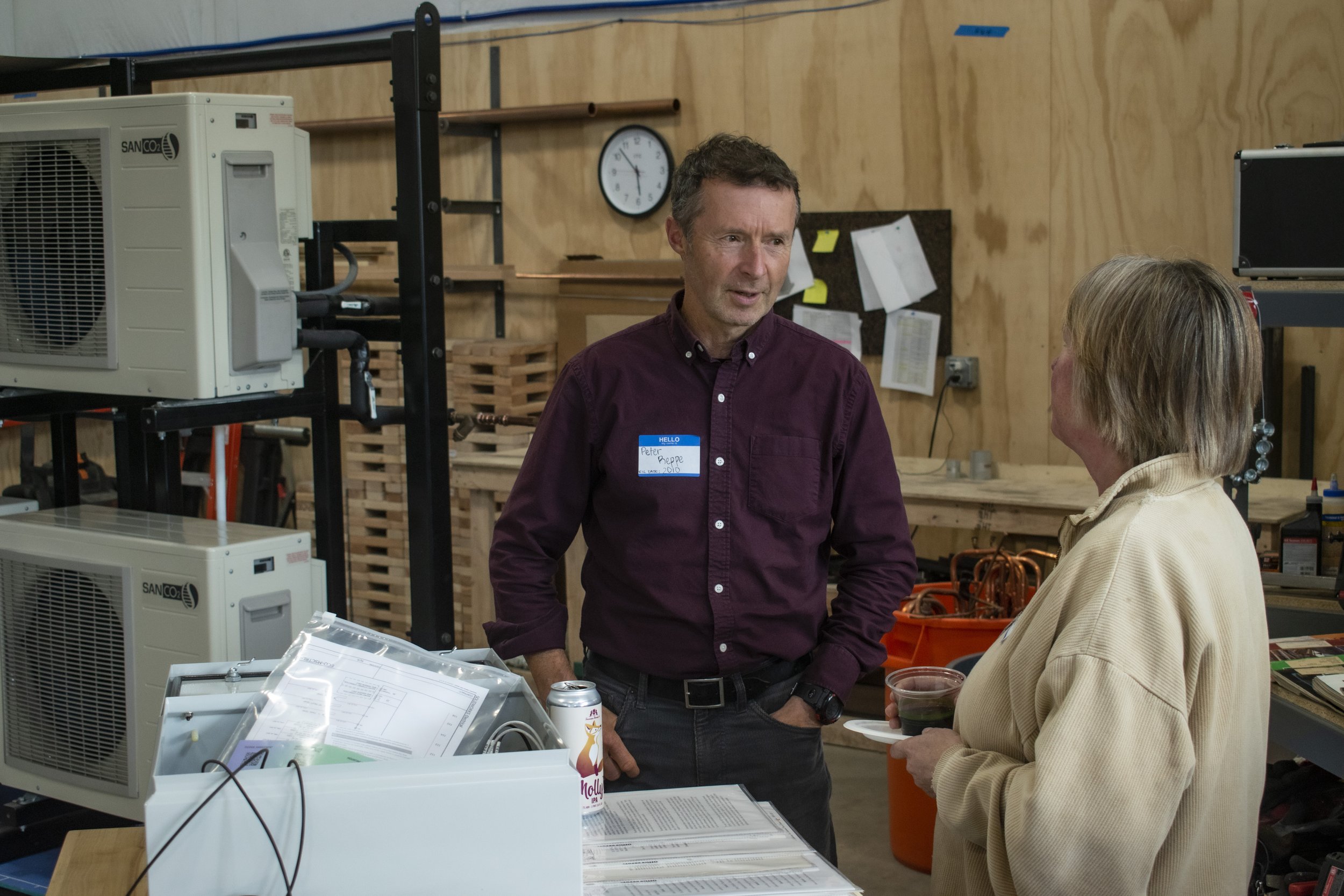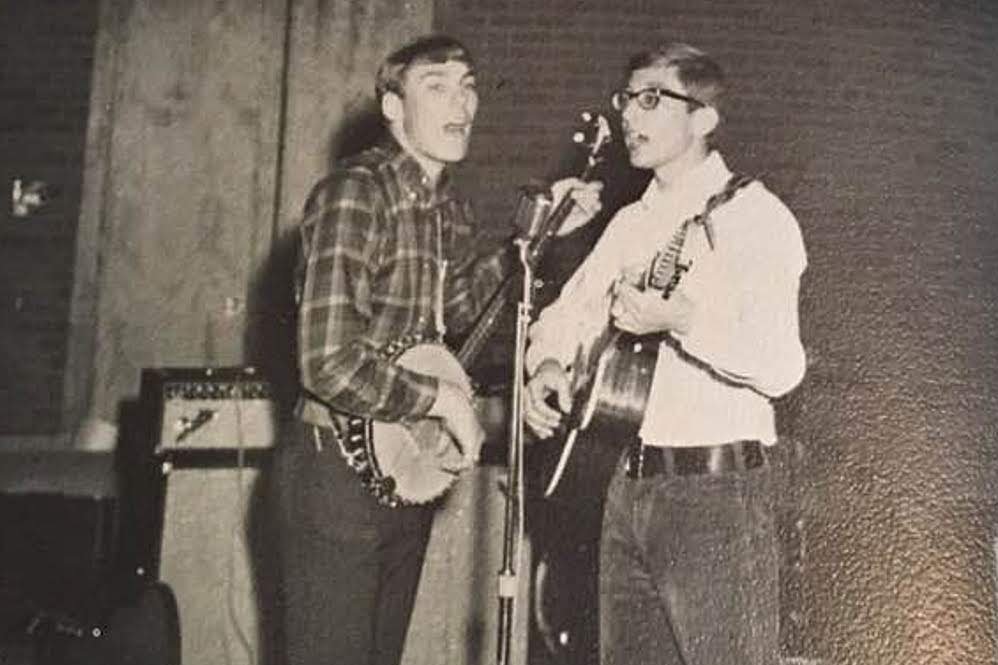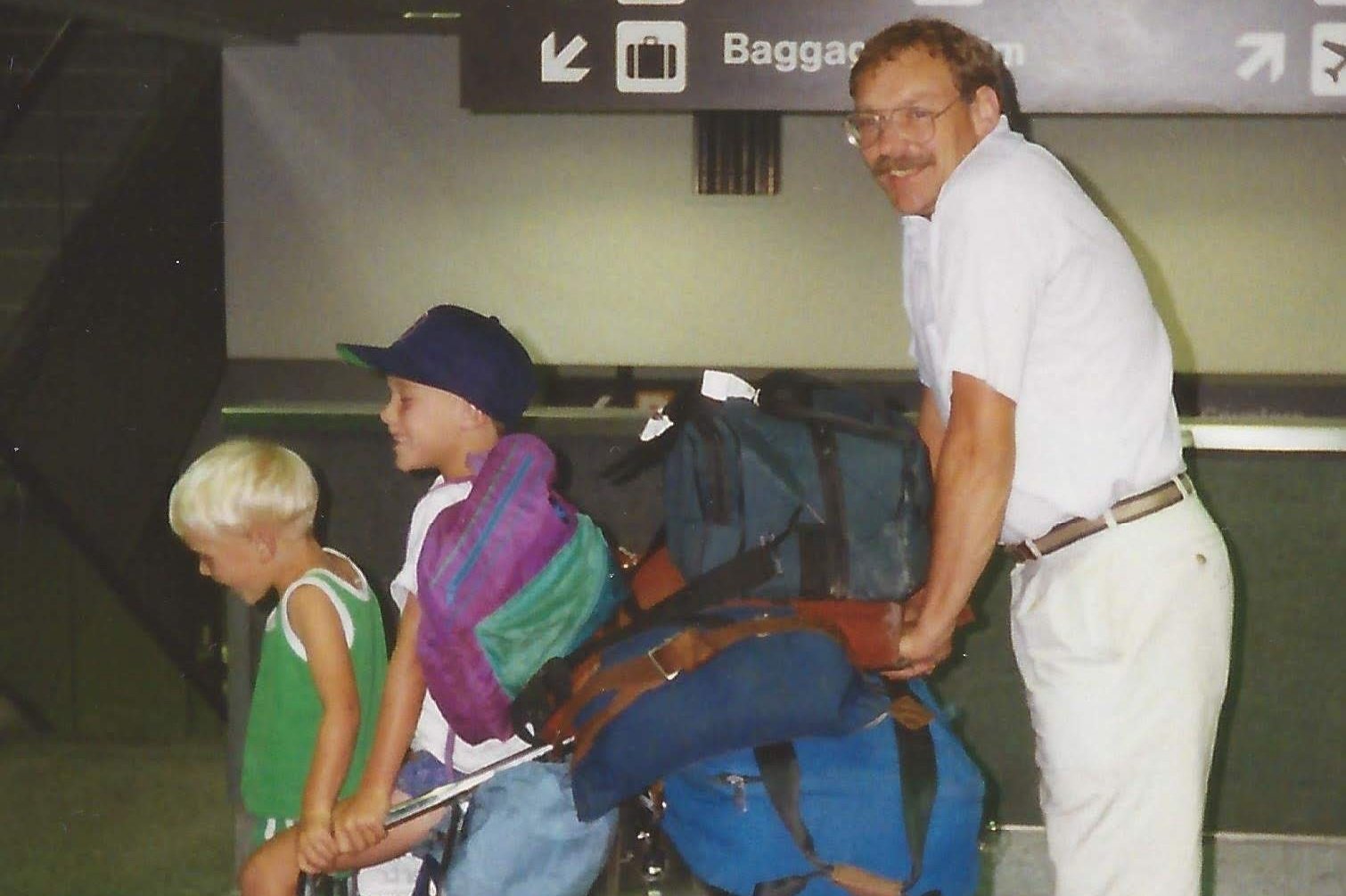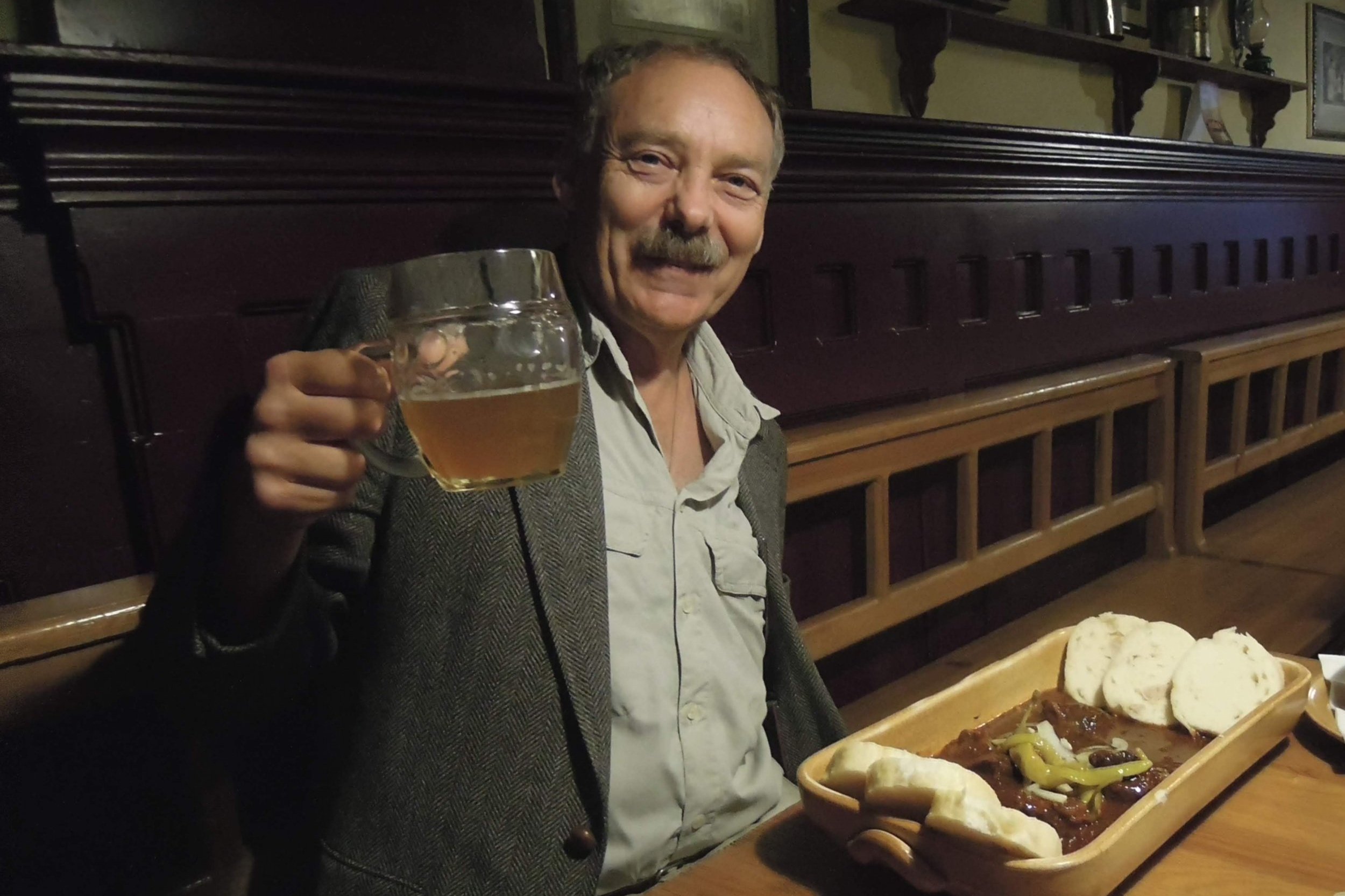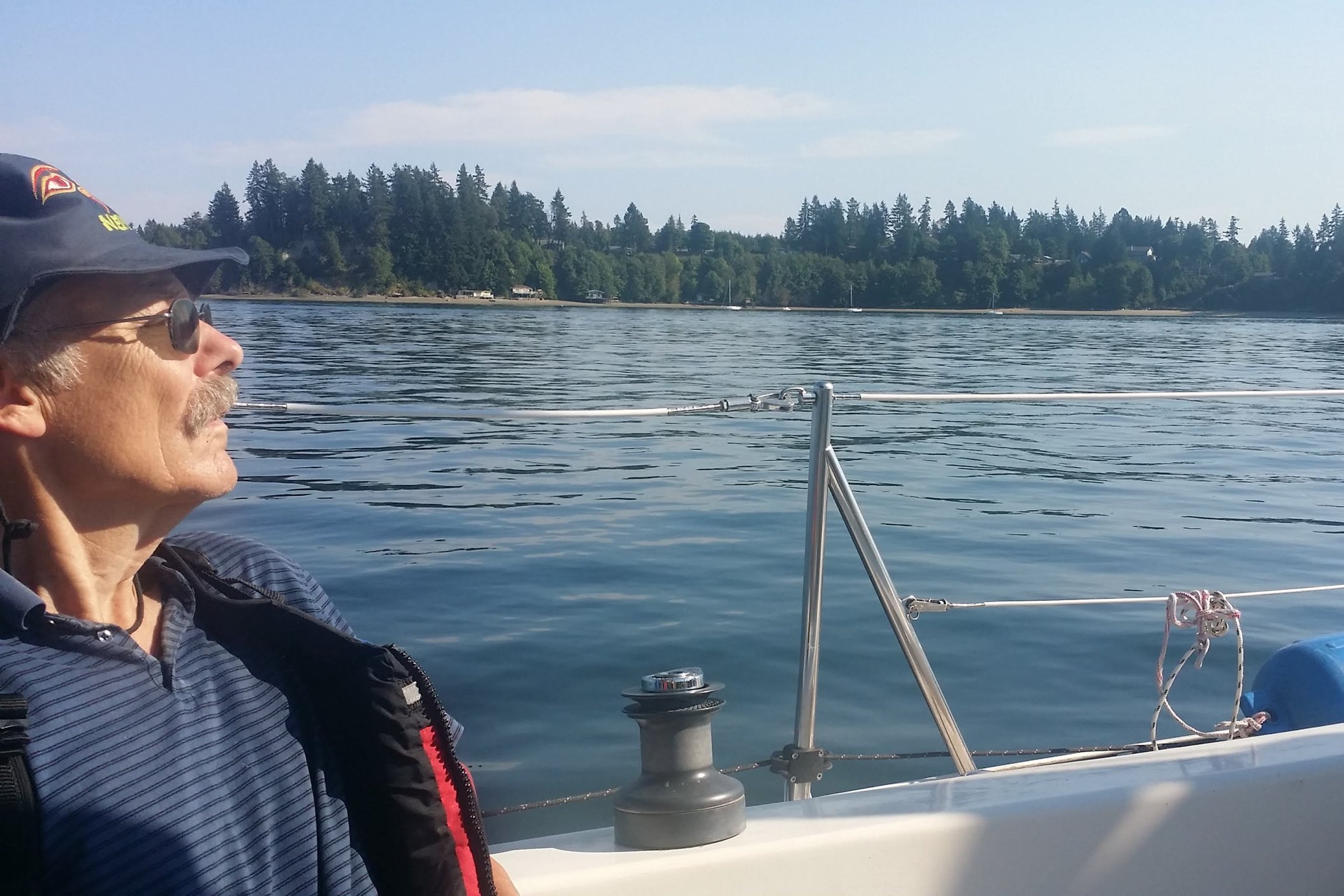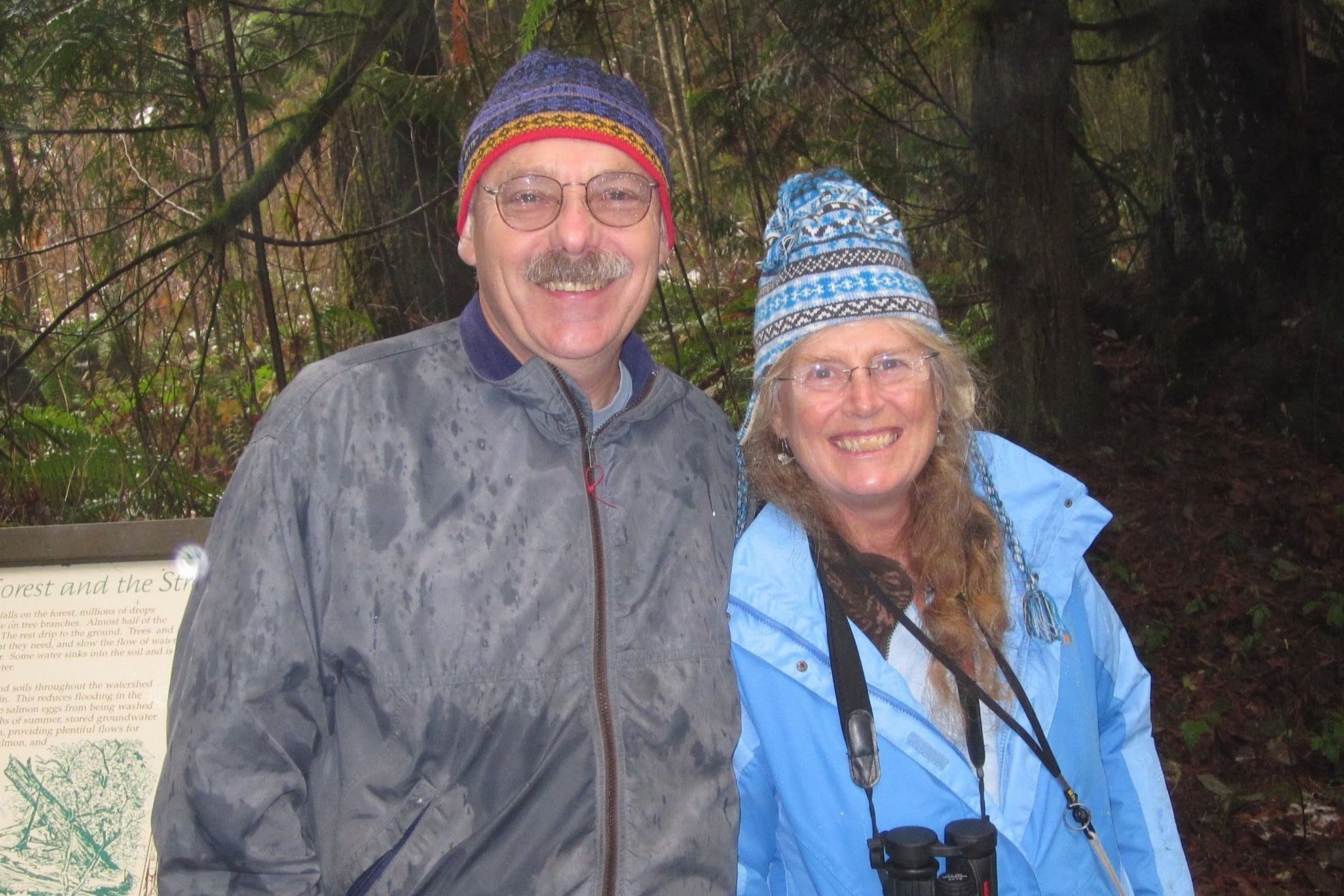Eklund Innovation Center Dedication for Our Tumwater WaterDrop DHWP Systems
/At the end of May, Small Planet Supply gathered with a small group of friends and colleagues to celebrate the official opening of the Eklund Innovation Center. The Eklund Innovation Center presently serves as the assembly plant for WaterDrop DHW plant systems and is named after Ken Eklund. Ken was dedicated to saving the planet and working to find ways to increase energy efficiency, harness natural energy and reduce carbon to protect the planet he loved. Ken was instrumental in working to bring SANCO2 heat pump water heaters (back then they were manufactured by Sanden) from Japan as well as working on the research that demonstrated the high efficiency of these heat pump water heaters.
When Small Planet Supply picked up the baton and began working to develop hot water heat plans using SANCO2, it made total sense to name our Tumwater assembly plant after him.
Ken Eklund, the namesake of our Innovation Center
Ken working with a SANCO2 Combi Installation in 2017. SANCO2 Combi systems provide hot water and heating for low-energy load homes.
Those who knew Ken Eklund understand perfectly why we chose to name our plant after him. For those of you who didn’t know Ken, this blog will be an introduction to the man behind our building’s name, the attributes/values that inspired us to honor him, and that we work to emulate in our own work here.
Ken had a passion to preserve the planet
Given Ken’s start in life, it wouldn’t have necessarily been a foregone conclusion that this would be so. Born in San Luis Obispo, and raised in Twin Falls, Idaho, Ken attended Stanford University, receiving a BA in history. When he returned to Idaho he attended law school at the University of Idaho, receiving his law degree in 1975. After graduation, Ken moved to Seattle and started practicing law. While in Seattle, Ken decided to change careers and began working in the solar energy and building science fields.
Ken worked as an energy analyst at Ecotope in Seattle where he pioneered techniques for analyzing energy efficiency programs. He realized and worked to demonstrate that efficiency could become the primary new resource to meet the region’s future energy needs.
Ken also taught at Edmonds Community College teaching courses, including a course on energy policy and codes where he met his wife, Wendy Williams. In 1985 he returned to Idaho and practiced law. In 1989, Ken decided to return to his work for energy and environmental conservation, joining the Idaho Department of Water Resources Energy Conservation division.
In the 1990s, Ken supported utility company initiatives to reduce the impact of CO2 emissions on the environment; even log homes and manufactured homes were included as part of the work. Ken worked for the State of Idaho until 2010, developing components of Idaho’s energy codes. He often had to overcome fierce opposition from some in the construction industry and the Idaho Legislature. He also successfully promoted the RESNET rating systems as an effective market-based path towards greater energy efficiency.
In 2010, after 20 years with the Idaho Department of Water Resources, Ken and Wendy left Boise, took a job with the Washington State University’s energy program in Olympia. There he worked on energy efficiency, research, and standards. He had a very successful career at WSU, devoting the last few years of his life to promising new technologies with substantial potential to reduce greenhouse gas emissions. Ken’s work with CO2-driven water heaters was his last -- and probably most important -- contribution to reducing energy use in the future, CO2 emitting a thousand times less than standard refrigerants.
His work has been influential in the Pacific Northwest's utility and energy policies; he leaves behind many published research studies and papers. (See bottom of the blog post for some of these).
Ken Knew That Working for Change Was Hard, but He Did It Anyway
Ken worked in the energy efficiency field and environmental law during a time when the human’s impact on the climate was known, but not a lot of action was taken. Ken worked to increase knowledge of better building practices and energy conservation. The forward to one of Ken’s publications had this appropriate quote. We aren’t able to attribute the quote, but it appears to be a knock-off of a Schopenhauer quote. Ken’s selection gives evidence of his knowledge of the difficulties that innovations face in the world.
Ken Utilized the Power of Collaboration
Dave Baylon, now retired from Ecotope, described Ken’s work around heat pumps (including SANCO2) demonstrated like this: “A bunch of people from Washington State Energy Office, which is WSU Energy Program (including Ken, and Oregon Department of Energy and I) organized an entire consortium to study how heat pumps and energy efficiency in houses work. Ken ran it. He ended up running the project and he developed not only a consortium, but he brought 50% of the money in from the matching funds scattered across the region and ran it for the duration. I always remember that Ken could bring this kind of energy to the process of organizing complex projects.”
Ken Saw the Potential in Heat Pumps and SANCO2 to Help Save the Planet
Dave Baylon shared what he felt that the last years of Ken’s work were especially focused on the SANCO2 heat pump. “In the last 6-8 years (of his life) he was trying to deal with what we all must deal with – that we screwed up the planet. We must pull it out of the fire, and we don’t know how. So his job turned out to be trying to study a particular type of heat pump that actually has some great promise, it may actually be the solution to some parts of the problem, and if it turns out to be true, Ken will get a lot of credit for actually getting us there –or at least keeping it on the table.”
Ken was a Pragmatic Idealist
It would be wonderful to say that all manufacturers of CO2 heat pumps were standing in line to sell CO2 heat pump water heaters in North America. The truth is, the Sanden which initially manufactured the SANCO2 heat pump water heaters (now manufactured by SANCO2) were the only ones who were willing to take the gamble of bringing in this product into our market. Ken’s research on the SANCO2’s performance solidified its importance as a strategy to efficiently heat hot water while almost eliminating CO2 emissions.
Ken’s Passion for the Planet Extended to the Rest of His Life
Ken was strongly connected to family, friends, and his community. He was married to two remarkable women, Jan and Wendy, and had three children, Mira, Nate, and Alice. Ken loved being in nature: skiing, whitewater rafting, sailing or being on the beach. He sang in the Olympia Peace Choir, wrote songs, meditated, enjoyed talking about religion and politics, but most of all he loved spending time with friends and family.
The dedication of the Eklund Innovation Center in May was a wonderful opportunity to bring together some of those who remember Ken and how he touched our lives. Ken passed away in 2018, but his legacy lives on in the people who knew him and the technology that we are developing which builds on his action years ago. It was also a reminder that each of our actions has the capacity to build a lasting legacy and to inspire the lives of others.
More about the history of WaterDrop development and Ken’s journey with SANCO2 and WaterDrop is in my building dedication speech. You can read it here.
To read some of Ken’s works:
Design tools for Energy Efficient Homes
CO2 Heat Pump Presentation with Charlie Stephens (2018)
Study Shows that Log Homes in Cold Climates Can Meet Energy Efficiency Standards (With Lisa Schwarz)
To learn more about the technology:
More information about the SANCO2 systems and the resulting WaterDrop technology is available on our website, which you can access via the buttons below.




